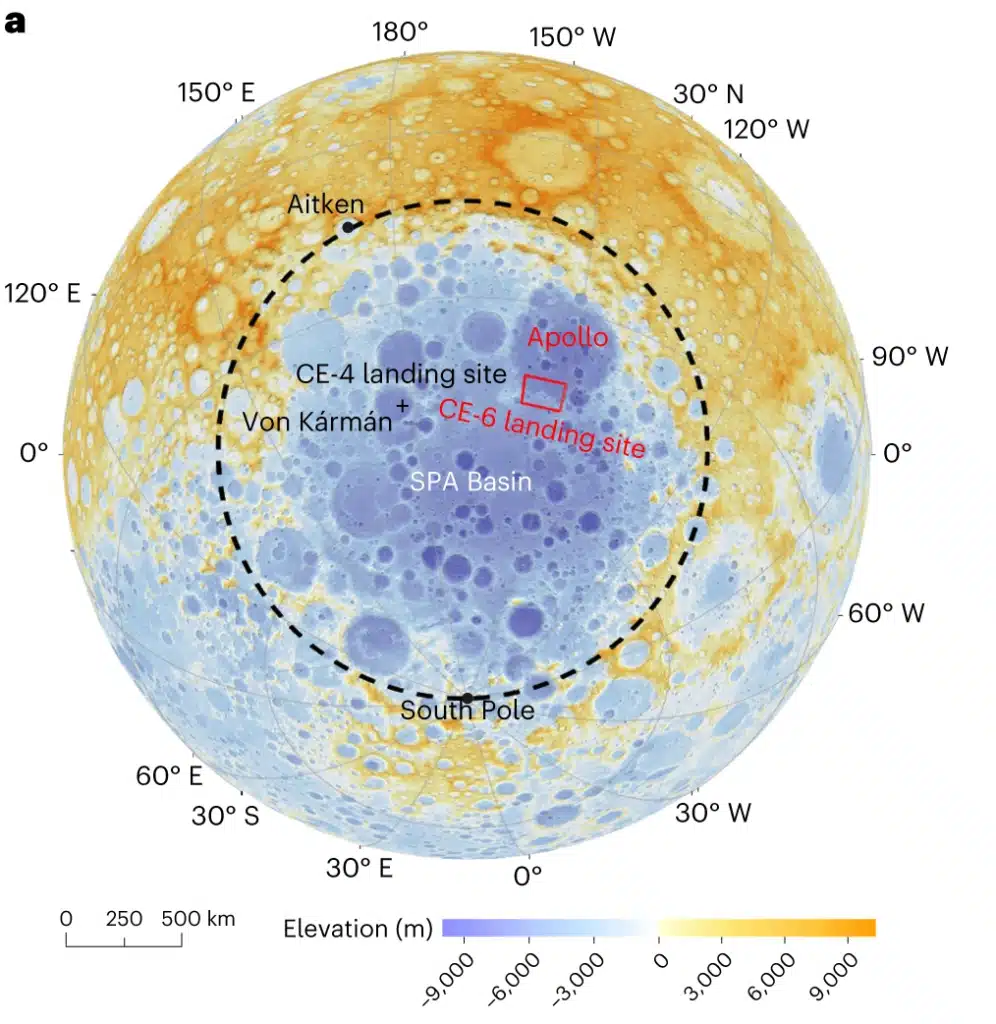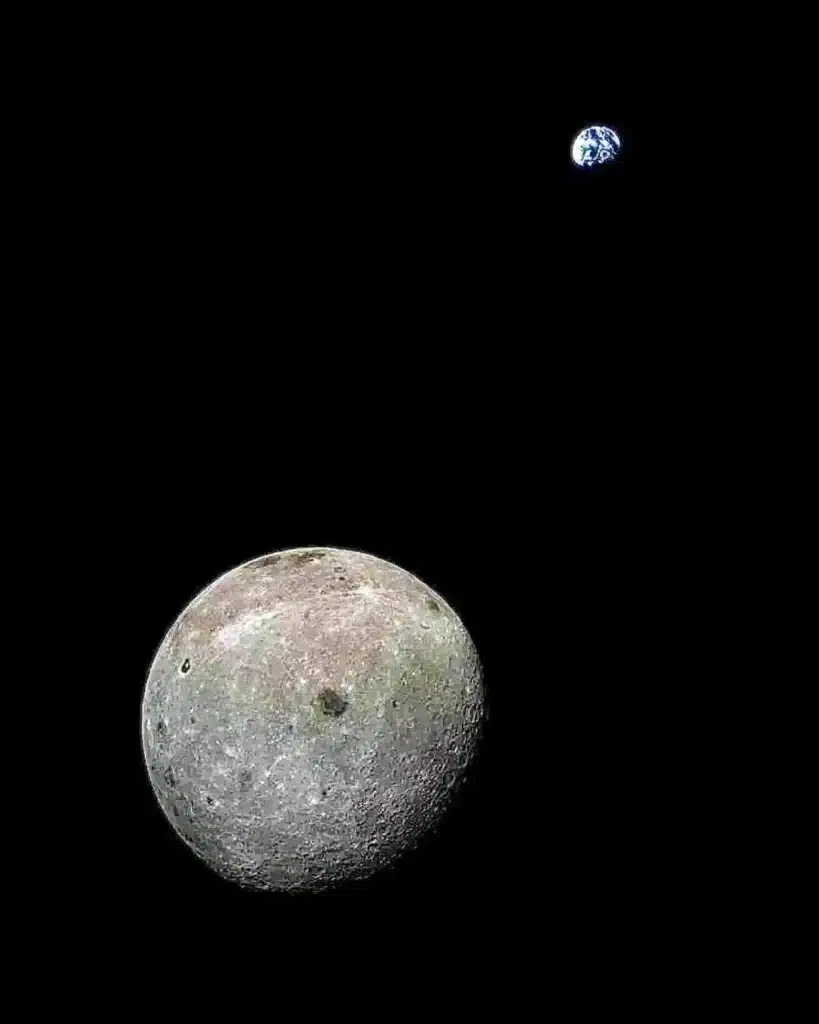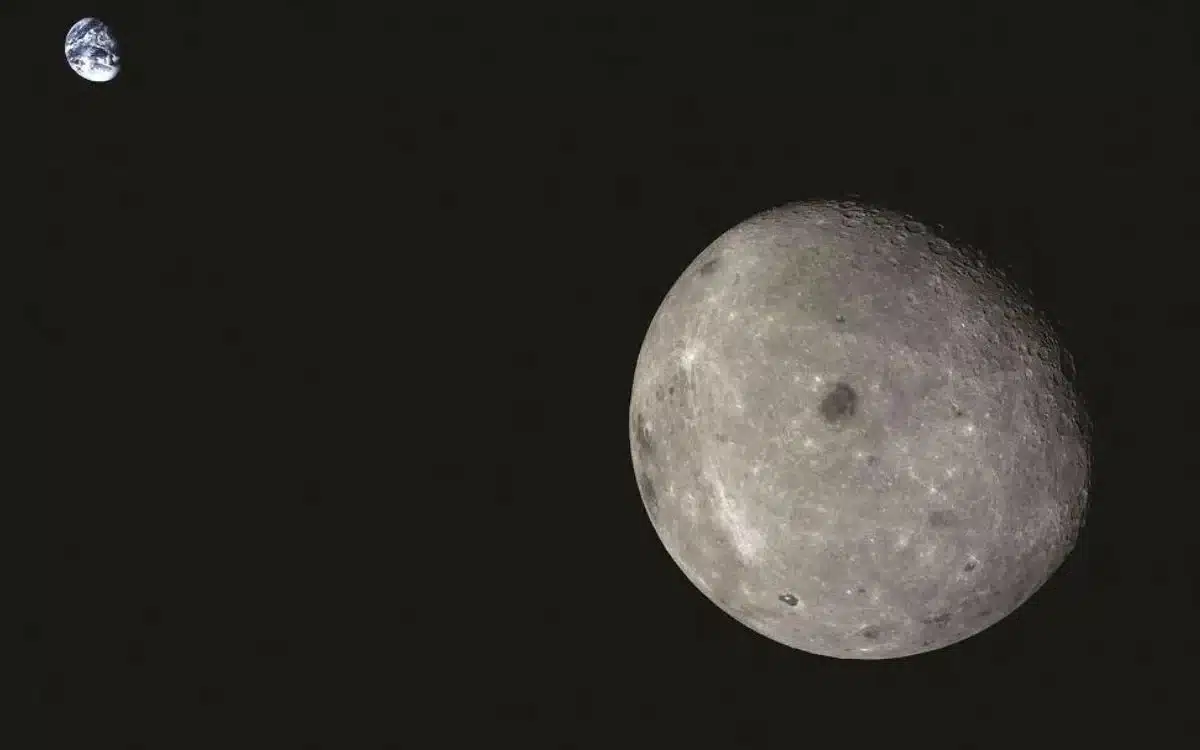Chinese spacecraft captured the side of the Moon we usually do not see
- The Chinese Chang’e 5-T1 spacecraft captured images of the far side of the Moon
- The fresh POV was captured back in 2020
- The craft was on a lunar sample return mission
Published on May 03, 2024 at 5:18 PM (UTC+4)
by Amelia Jean Hershman-Jones
Last updated on May 07, 2024 at 6:44 PM (UTC+4)
Edited by
Tom Wood
You might see it in the sky every night, but the Chinese Chang’e 5-T1 spacecraft once captured a side of the Moon you’ve probably never seen before – and it’s pretty breathtaking.
This photograph shows us part of the lunar landscape we aren’t so familiar with – and gives us a whole new perspective on Earth, too.
Captured back in 2020, the Chang’e 5 was on a Chinese National Space Administration (CNSA) lunar sample return mission.
READ MORE! Unveiling the extraordinary way in which the ISS was built
Launched on 23 November, the mission goal was to land in the Mons Rumker region of Oceanus Procellarum in a 23-day mission on the near side of the moon.
Which is where the ‘forever’ library is located that could last billions of years.
The 300-kilogram return capsule recovered precious lunar samples before a successful re-entry and landing of the Chang’e-5 return capsule.

Recovery vehicles tracked down the capsule to the grasslands of Inner Mongolia, China, and found 1,731 grams of lunar material.
Which isn’t too dissimilar to the moondust a businessman has had his Pagani Utopia painted with.
It’s believed the rock samples were billions of years younger than those previously delivered by U.S. Apollo and Soviet Luna missions.
Meanwhile, NASA needs help retrieving Mars samples that could confirm the existence of alien life.
China’s Chang’e-6 lunar far-side sample return mission spacecraft is set to launch later his month.
The 8,200 kg craft will launch on a Long March 5 rocket.
After landing on the far side of the moon, it will collect samples and deliver them to Earth.
It is thought that material from beneath the moon’s crust is accessible in the South Pole-Aitken (SPA) basin.

The lander will attempt to collect 2,000 grams of material, both scooped from the surface and collected by a drill.
Analysis of this material could provide information into the history of the moon, Earth, and wider solar system.
It could also help explain why there is a difference in the composition of nearside versus far-side lunar rock.
The mission is expected to last 53 days from launch until landing, according to China’s Deep Space Exploration Laboratory (DSEL).
DISCOVER SBX CARS: The global premium car auction platform powered by Supercar Blondie

London-based Amelia cut her journalistic teeth covering all things lifestyle, wellness, and luxury in the UK capital. Fast-forward a decade and the senior content writer and editor has put pen to paper for glossy magazines, busy newsrooms, and coveted brands. When her OOO is on from writing about cars and heading up on-site SEO you can find her spending quality time with her young family, in the gym, or exploring the city she loves.





